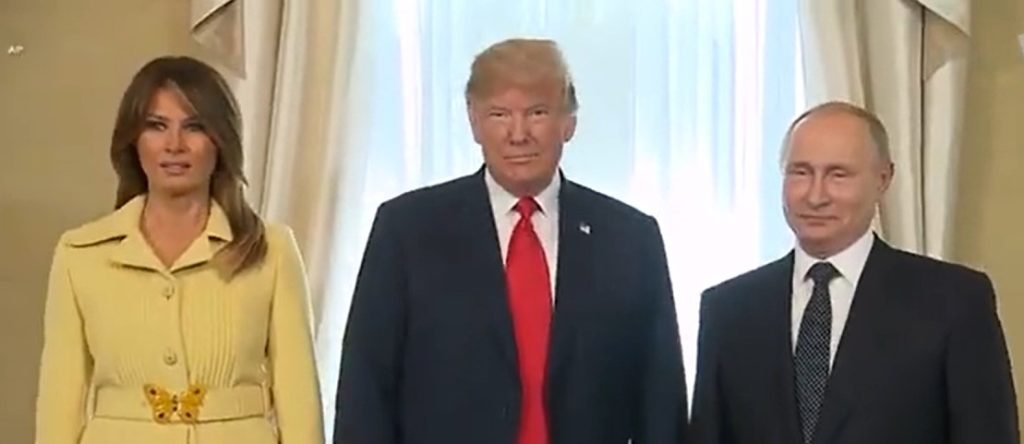As promised throughout the campaign, one of President-elect Donald Trump’s top priorities is to end the war in Ukraine. For the past 33 months, the Biden administration has refused to provide Ukraine with the timely long-range and air defense capabilities needed to win decisively. As a result, the conflict became a stalemate and a war of attrition.
Ukraine’s losses now exceed 80,000 dead soldiers and 5,000 civilians. Beneath the surface of the extraordinary resilience, determination and sheer courage of the Ukrainian people, a palpable sense of war fatigue is beginning to prevail.
In some ways, President Trump faces a similar predicament to President Richard Nixon, who inherited from his Democratic predecessor in 1969 a war that President Lyndon Johnson could neither win nor end. The good news is that, unlike its ally South Vietnam, Ukraine has shown that it can emerge from the war as a prosperous, independent country. In a phone call with Ukrainian President Volodymyr Zelenskiy after his election, Trump reassured him that the end game would be bearable, even if some major concessions had to be made. The next day, President Trump called Russian President Vladimir Putin and told him: I don’t want to see it The war intensified and at the same time served as a stark reminder to him of America’s huge military presence in Europe.
The outlines of a Trump “deal” are already beginning to emerge. Russia will maintain the territory it currently occupies. There would be a “buffer zone” or “demilitarized zone” patrolled by European troops. Ukraine will not be a member of NATO for a long time, perhaps another quarter century. Various major sanctions against Russia would be lifted. As with any such deal, there will be some bitter pills that both sides will have to swallow. Ukraine will have to accept, at least for the time being, the de facto loss of Crimea, the Zaporozhyh Corridor, and much of the Donetsk Basin. President Putin will not be able to achieve two of his larger strategic goals: dismantling NATO and turning Ukraine into a Russian satellite state. Mr. Zelenskiy is likely to accept such a deal, given his increasingly narrow options. The bigger question is whether Putin will do so.
Trump’s plan includes using U.S. influence to force the two sides to agree. If Ukraine follows the US peace plan, it will continue to receive US military aid for its defense needs. If Russia refuses to comply, aid to Ukraine will increase significantly beyond its defense needs, further hurting Russia. The key question will be whether Putin takes seriously the U.S. threat to step up military aid to Ukraine if Russia remains in the fight. President Trump’s reputation for unpredictability and toughness could help convince President Putin to accept his winnings and agree to a deal.
With two months left in his term, President Joe Biden has two months left in office to support his successor and support the U.S. military by increasing the amount of U.S. troops already authorized by Congress to the maximum and putting Ukraine in the best position possible. There is an opportunity to promote the national interests of This is to resist Russia’s continued onslaught. While such a move would strengthen President Trump’s relationship with President Putin, it would further increase the costs for Russia of continuing the war.
We must have no illusions that this will be a permanent peace. Instead, a “Cold War pact” similar to those that have been widespread on the Korean peninsula over the past 70 years may be more appropriate. Despite the obvious drawbacks, there are significant long-term benefits for Ukraine. As the late Henry Kissinger tirelessly pointed out, wise political strategy is about choosing achievable and realistic outcomes over unattainable maximum goals. By 2023, any chance of real victory had disappeared. The West’s reluctance to give Ukraine more offensive capabilities meant that Russian forces were entrenched along an 800-mile front, making the prospect of removing them extremely costly. At this point, it appears that neither the European and American publics nor the elites of the right or left are willing to do whatever it takes to support a complete victory for Ukraine.
Under President Trump’s plan, Ukraine will not formally join NATO for many years, but countries, including the United States, need to ensure that it has the security it needs to become a “Porcupine Nation” that would be highly unattractive for Russia to invade. and hardware to Ukraine. Also. Ukraine’s own innovative weapons industry and technological elite, which achieved remarkable results during the war, will make an important contribution to this objective.
Taking a page from Israel’s strategic model, Ukraine could prosper while integrating its economy with the European Union and other economies, even in the face of a hostile Russia. Time may not be on Ukraine’s side as the current war of attrition continues to be brutal. But under President Trump’s long-term ceasefire, time will be on Ukraine’s side economically, politically, and strategically. Giving President Trump a chance on Ukraine makes a lot of strategic sense as the West ponders its options, including tougher policy choices than it previously wanted.
Alberto Coll is a professor of law and U.S. foreign relations at DePaul University and a former assistant secretary of defense.
The views and opinions expressed in this commentary are those of the author and do not reflect the official position of the Daily Caller News Foundation.
All content produced by the Daily Caller News Foundation, an independent, nonpartisan news distribution service, is available free of charge to legitimate news publishers with large audiences. All republished articles must include our logo, reporter byline, and DCNF affiliation. If you have any questions about our guidelines or our partnership, please contact us at licensing@dailycallernewsfoundation.org.







